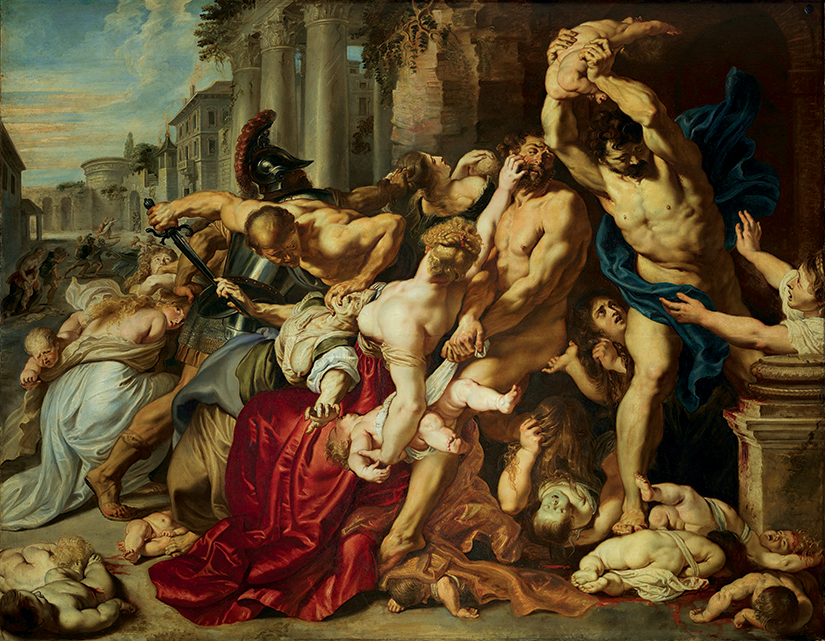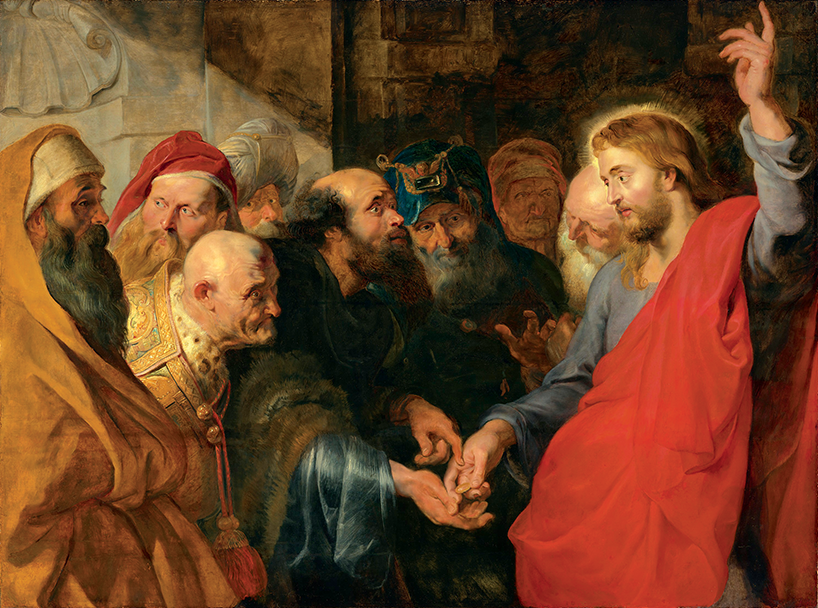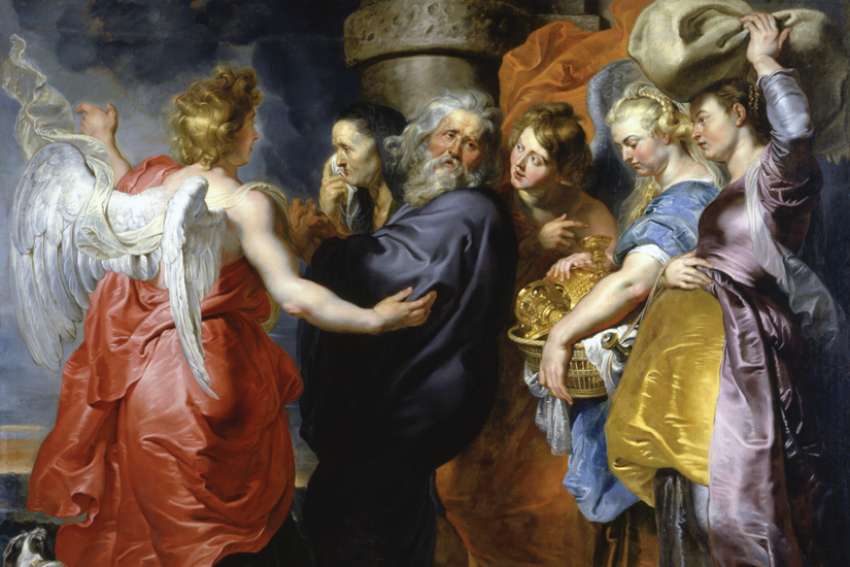The Early Rubens exhibition at the Art Gallery of Ontario in Toronto (which runs until Jan. 5) shows the work of a master persuader whose message still has the power to surprise 400 years on. The message is of a reforming Church that proclaims salvation in the humanity of Christ and urges Christians to claim their own humanity, even in the context of war and division.
In 1609 Rubens returned from eight years of study in Rome to an Antwerp divided militarily, ideologically and religiously, in the middle of the Eighty Years’ War that followed the Reformation. Rubens’ vision of the Counter Reformation was a movement to counter war and division.
The Protestants in the Dutch half of the city had stripped their churches of paintings and smashed most of the statues in the 1566 Beeldenstorm. For more than two generations people died and families were displaced throughout the low countries. An exhausted populace had seen the wealth of Antwerp drain away as their Catholic Spanish rulers poured everything into armadas and armies engaged in redrawing the map of Europe.
“He was painting in the context of religious warfare,” curator Sasha Suda told The Catholic Register. “There was hardly stability in the economy. Massive institutions were being called into question, namely the Catholic Church, but also the Holy Roman Empire, which had dominion over this region for a period of time before it separated and the Dutch Republic broke off. So there’s not a lot of comfort with authority.
“He (Rubens) was able to come into this really shaky historical moment and ground it again. He becomes essentially a device of the Catholic Church and the Counter Reformation. But he also rises above that, and has a dialogue across disciplines, across institutions, across borders to drive peace forward.”
Rubens wasn’t just a painter. He was also one of the most astonishingly successful diplomats in European history, knighted by the Protestant King Charles I of England and the Catholic King Philip IV of Spain. As both a painter and a diplomat, he sought peace through persuasion.
A student of rhetoric and philosophy in Rome and a member of the Romanist Club in Antwerp — a club dedicated to debate and reason — Rubens wanted any alternative to war.
 The Massacre of the Innocents, painted by Rubens soon after he returned to Antwerp in 1610, is the greatest anti-war painting of the Counter Reformation. It’s part of The Thomson Collection at the Art Gallery of Ontario and will remain on display even after the Early Rubens exhibition closes on Jan. 5.
The Massacre of the Innocents, painted by Rubens soon after he returned to Antwerp in 1610, is the greatest anti-war painting of the Counter Reformation. It’s part of The Thomson Collection at the Art Gallery of Ontario and will remain on display even after the Early Rubens exhibition closes on Jan. 5.
There is no clearer anti-war message than his painting The Massacre of the Innocents. It appears as just an old religious painting depicting King Herod’s army carrying out the order to murder every male child under the age of two, until you see it in the context of a religious war. The insensible, unstoppable cruelty of the soldiers, the limp bodies of murdered babies, the women in grief all come at the viewer, right off the canvas.
Rubens set up shop in Antwerp in 1609 and began painting huge canvases, filled with massive, muscular bodies engaged in dramatic struggles for hearts and minds. He was immediately a success and his studio filled with apprentices and students as Rubens took on a seemingly inexhaustible stream of commissions.
He painted the drama of how people come to believe or fail to believe.
“He learned in Rome that no drama is too much drama,” said Suda.
 In The Tribute Money, painted in 1612. the Pharisees seem unsure what they should be looking at, with some firmly fixed on Jesus and others following the money. The painting belongs to The Fine Arts Museums of San Francisco, which co-produced the Early Rubens exhibition with the Art Gallery of Ontario.
In The Tribute Money, painted in 1612. the Pharisees seem unsure what they should be looking at, with some firmly fixed on Jesus and others following the money. The painting belongs to The Fine Arts Museums of San Francisco, which co-produced the Early Rubens exhibition with the Art Gallery of Ontario.
His painting The Tribute Money, which depicts Jesus teaching the Pharisees to render unto Caesar what is Caesar’s and to God what is God’s, shows some angry, righteous old men looking not at the luminous figure of Jesus but at the coin. His oil sketch The Elevation of the Cross is a scene of cruelty and violence, but the women looking up from the ground are in awe, recognizing humanity’s salvation. In The Annunciation Rubens shows the angel Gabriel not as an awesome figure dictating God’s message, but as a supplicant looking up to Mary.
The question of what you see and how you believe was central for Rubens. As a Catholic, Rubens defended the real presence of Christ in the elevated host of the Eucharist against the argument that it appeared to be just bread. But appearances aren’t everything and Rubens wanted his viewers to see with their hearts.
His humanist message is evident by the women in his paintings. They react to inhuman violence with human fear. In The Entombment of Christ and the Michielsen Triptych women react to the death of Christ with human grief.
“They tend to be, if not the more human figure in the subject, they are often the protagonist or the stronger person in the subject or in the composition, which is an interesting thing,” observes Suda.
Before Rubens, painters like Michaelangelo had used male models and then painted them as women.
But Rubens painted the real women in his life, using both of his wives — he remarried after his first wife Isabella died of the plague at age 34 — as models. The difference is women who seem real rather than idealized abstractions.
“I would feel comfortable saying he was a feminist,” Suda said. “He certainly didn’t put women in disenfranchised positions in most of his paintings — which is pretty extraordinary.”
Rubens’ paintings have never faded from the Christian imagination. His pictures defined a Christian humanism born out of European crisis. Today Pope Francis calls the Church to renew that vision.
“The forms of populism that are spreading these days are nourished by the constant search for contrasts — they do not open the heart, but rather imprison it within walls of suffocating resentment,” Pope Francis told the bishops of Europe gathered in Santiago de Compostela, Spain, this month. “We encourage the people of God to work for a new European humanism, capable of dialogue, integration and generation.”
Looking at Rubens’ paintings in the context of our divided times, there’s still a Christian message there.
“Once you see Rubens you can’t un-see him,” said Suda.


